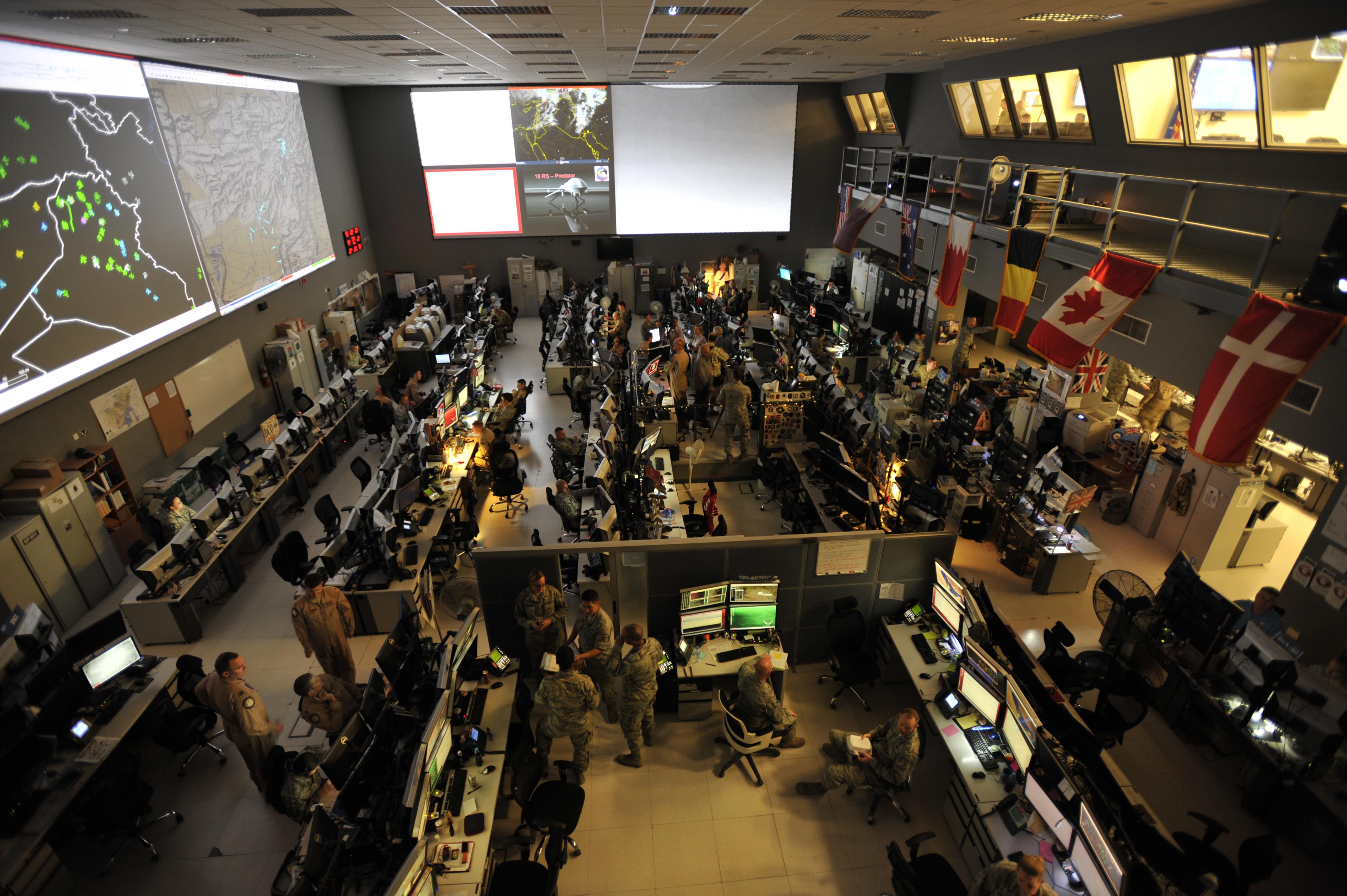The combined air operations center, shown here, at Al Udeid AB, Qatar, provides command and control of air power throughout Iraq, Syria, Afghanistan, and 17 other nations. Air Force photo by TSgt. Joshua Strang.
A series of human errors in dynamic target development led to a group of US and coalition aircraft striking a group of fighters allied with the Syrian regime, killing at least 15 in September, according to highlights of a classified US Central Command-directed investigation, released on Tuesday.
Steps leading to the Sept. 17 strike near Dayr az Zawr, Syria, began two days earlier when intelligence, surveillance, and reconnaissance asset started tracking a vehicle. Analysts incorrectly tagged the vehicle as ISIS, which colored the rest of the decision making process. The vehicle arrived at a camp, where it was treated “with deference,” prompting analysts to determine the entire camp was aligned with ISIS, said Brig. Gen. Richard Coe, the inspector general of Air Combat Command who was appointed by Air Forces Central Command chief Lt. Gen. Jeffrey Harrigian to handle the investigation.
Before the strike began, the coalition took the unusual step of telling the Russian military the coordinates of the strike to deconflict airspace because it was an area the coalition had not operated in before, and there would be a large flight of aircraft in the area, Coe said. However, the operator on the call with the Russians passed along the wrong area—saying the target was nine kilometers south of the Dayr az Zawr airfield, instead of the correct target of nine kilometers south of the city itself.
Ultimately, a team of US, Danish, Australian, and British aircraft, including F-16s, A-10s, F/A-18s, and remotely piloted aircraft struck the target. Immediately when the strike began, however, Russia called the US combined air operations center to notify them that they were hitting Syrian forces, Coe said. However, Russia initially called and only wanted to speak to its regular contact in the operations center, who was not available. Twenty-seven minutes later, when Russia called back and eventually spoke to its regular contact, did aircraft stop striking. US and coalition aircraft dropped 34 precision-guided munitions and 380 30mm rounds from the A-10.
If Russia had not told the US officials, the strike would have continued and more Syrian fighters would have been killed, Coe said in a Tuesday briefing.
Investigators found that the strike was conducted within standard operating procedures and within the law of armed conflict. Errors in identification, stemming from the initial vehicle, led to the decision to strike the entire camp, which included tents, tunnels, fighting positions, and vehicles.
The analysis did not include a designated “red team” of analysts whose job is to look critically at the targeting, Coe said. One analyst spoke out in a chatroom that the target could not have been ISIS because the camp had a tank, but that did not ultimately impact the decision to strike, Coe said.
Following the investigation, Air Forces Central Command and the anti-ISIS coalition should review multiple parts of its dynamic targeting decision making process and other steps to ensure it does not happen again, Coe said. This includes reviewing the dynamic targeting process itself, improving information sharing, improving the operations center’s lessons learned process, and making sure that both Russia and the US pass along critical information immediately.
US investigators could not visit the site, and could only determine that at least 15 fighters were killed based on overhead imagery, Coe said. Also, the group of fighters was not wearing uniforms, which impacted the decision to strike and meant investigators could not definitively say if those killed were part of the Syrian Army, Coe said.
The Syrian Observatory for Human Rights said at the time that as many as 80 soldiers were killed in the strike, but this could not be independently confirmed, Coe said. The US has no plans to pay reparation for the strike, but Syria could make a formal claim that would go through the State Department, according to AFCENT.

